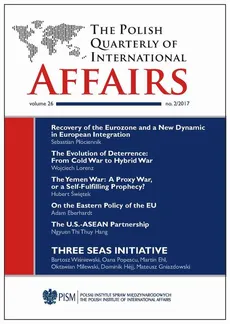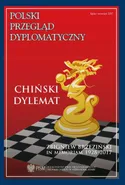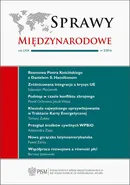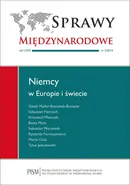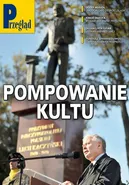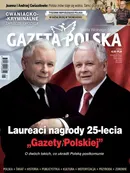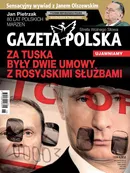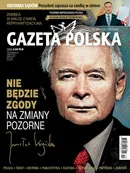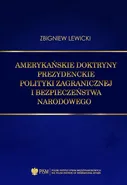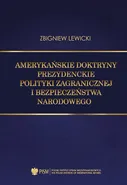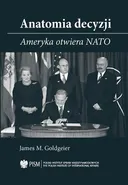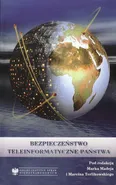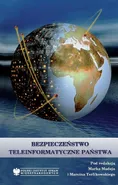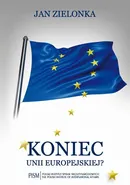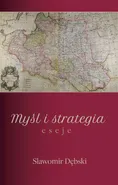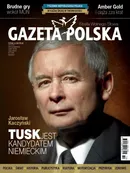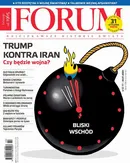The Polish Quarterly of International Affairs 2/2017
„The Polish Quarterly of International Affairs” jest anglojęzycznym kwartalnikiem Instytutu poruszającym i analizującym kwestie istotne dla Europy Środkowej i Wschodniej. Stanowi forum debat nad współczesnymi wydarzeniami międzynarodowymi. Każde wydanie zawiera zbiór autorskich artykułów poddanych ocenie peer review, a także recenzje specjalistycznych publikacji.
The Polish Quarterly of International Affairs is the Institute’s English language journal and has a Central and Eastern European focus. It provides a forum for the analysis and debate of international affairs through a collection of original, peer reviewed articles on a contemporary theme.
- Kategorie:
- Język wydania: angielski
- ISSN: 1230-4999
- Liczba stron: 140
-
Sposób dostarczenia produktu elektronicznegoProdukty elektroniczne takie jak Ebooki czy Audiobooki są udostępniane online po opłaceniu zamówienia kartą lub przelewem na stronie Twoje konto > Biblioteka.Pliki można pobrać zazwyczaj w ciągu kilku-kilkunastu minut po uzyskaniu poprawnej autoryzacji płatności, choć w przypadku niektórych publikacji elektronicznych czas oczekiwania może być nieco dłuższy.Sprzedaż terytorialna towarów elektronicznych jest regulowana wyłącznie ograniczeniami terytorialnymi licencji konkretnych produktów.
-
Ważne informacje techniczneMinimalne wymagania sprzętowe:procesor: architektura x86 1GHz lub odpowiedniki w pozostałych architekturachPamięć operacyjna: 512MBMonitor i karta graficzna: zgodny ze standardem XGA, minimalna rozdzielczość 1024x768 16bitDysk twardy: dowolny obsługujący system operacyjny z minimalnie 100MB wolnego miejscaMysz lub inny manipulator + klawiaturaKarta sieciowa/modem: umożliwiająca dostęp do sieci Internet z prędkością 512kb/sMinimalne wymagania oprogramowania:System Operacyjny: System MS Windows 95 i wyżej, Linux z X.ORG, MacOS 9 lub wyżej, najnowsze systemy mobilne: Android, iPhone, SymbianOS, Windows MobilePrzeglądarka internetowa: Internet Explorer 7 lub wyżej, Opera 9 i wyżej, FireFox 2 i wyżej, Chrome 1.0 i wyżej, Safari 5Przeglądarka z obsługą ciasteczek i włączoną obsługą JavaScriptZalecany plugin Flash Player w wersji 10.0 lub wyżej.Informacja o formatach plików:
- PDF - format polecany do czytania na laptopach oraz komputerach stacjonarnych.
- EPUB - format pliku, który umożliwia czytanie książek elektronicznych na urządzeniach z mniejszymi ekranami (np. e-czytnik lub smartfon), dając możliwość dopasowania tekstu do wielkości urządzenia i preferencji użytkownika.
- MOBI - format zapisu firmy Mobipocket, który można pobrać na dowolne urządzenie elektroniczne (np.e-czytnik Kindle) z zainstalowanym programem (np. MobiPocket Reader) pozwalającym czytać pliki MOBI.
- Audiobooki w formacie MP3 - format pliku, przeznaczony do odsłuchu nagrań audio.
Rodzaje zabezpieczeń plików:- Watermark - (znak wodny) to zaszyfrowana informacja o użytkowniku, który zakupił produkt. Dzięki temu łatwo jest zidentyfikować użytkownika, który rozpowszechnił produkt w sposób niezgodny z prawem. Ten rodzaj zabezpieczenia jest zdecydowanie bardziej przyjazny dla użytkownika, ponieważ aby otworzyć książkę zabezpieczoną Watermarkiem nie jest potrzebne konto Adobe ID oraz autoryzacja urządzenia.
- Brak zabezpieczenia - część oferowanych w naszym sklepie plików nie posiada zabezpieczeń. Zazwyczaj tego typu pliki można pobierać ograniczoną ilość razy, określaną przez dostawcę publikacji elektronicznych. W przypadku zbyt dużej ilości pobrań plików na stronie WWW pojawia się stosowny komunikat.
Articles Sebastian Płóciennik Recovery of the Eurozone and a New Dynamic in European Integration: Implications for Member States outside the Monetary Union (s. 7) In the last few years, the division of the EU between Member States inside and outside the eurozone has begun to stabilise. Those that intended to adopt the single currency as early as possible have done so and the others either did not wish to join the eurozone or could not do so quickly. This stability was supported by several factors, in particular the economic weakness of the eurozone, the relatively high political and economic weight of countries on the outside (which guaranteed) their influence in the EU, and the general stagnation of EU integration processes. However, it is becoming clear that by 2017, these factors are becoming less influential, which may translate into a change in the relationship between Member States inside the eurozone and those outside. Neither a new enlargement dynamic of the single currency area nor a deepening of divisions in the EU can be ruled out. Wojciech Lorenz The Evolution of Deterrence: From Cold War to Hybrid War (s. 22) The theoretical foundations of the deterrence concept were developed during the Cold War and used by the U.S. and NATO to reduce the risk of military confrontation with the USSR. After the collapse of the Soviet Union, the dissolution of the Warsaw Pact and the 11 September terrorist attacks, the U.S changed its deterrence policy. Although Russia’s aggressive policy forced NATO to reinstate deterrence, it will be supported by other forms of influence to limit the risk of confrontation in Europe. Hubert Świętek The Yemen War: A Proxy War, or a Self-Fulfilling Prophecy? (s. 38) In recent years, Yemen has become an arena of strategic competition between Middle Eastern regional powers. As is the case with many other regional conflicts, the Yemen war is considered in the context of major international politics and great-power rivalry. Contrary to appearances, however, this is not a proxy war waged by Iran, one that the great rival of Teheran—Saudi Arabia—must, for the sake of its own security interests, oppose. On the contrary, Riyadh is a major player in the conflict, pursuing its own imperial interests. But its strategy has thus far been unsuccessful, prolonging the conflict and resulting in the devastation of Yemen and a humanitarian disaster. This can boost the role of terrorist organisations on a scale comparable to what we are witnessing in Syria and Iraq, creating a real threat to international security. Bartosz Wiśniewski The Three Seas Initiative after the Warsaw Summit: What Next? (s. 55) The Warsaw TSI summit was a political success, thanks in no small part to the participation of U.S. President Donald Trump. The TSI has thus been endowed with a much needed—and generally unexpected—gravitas. However, Trump’s endorsement of the Initiative should not come across as entirely unexpected. On the contrary, it is possible to track this support to the fundamentals of U.S. foreign policy strategy towards the CEE in the post-Cold War era. As for the TSI itself, it still faces a number of challenges, such as defining the role of key stakeholders, coming up with a viable list of deliverables, and calibrating its relationship with other regional cooperation mechanisms. Oana Popescu Romania: A Latecomer Who Wants to Get in the Game (s. 65) Romania will host the Three Seas Initiative (TSI) summit in 2018. After the launch of the initiative in Croatia in 2016 and the new energy injected into it, not least through U.S. endorsement, in Warsaw this year, the main question to answer in Bucharest in 2018 is if we can now put some meat on the bones. Martin Ehl The Three Seas Initiative through Czech Eyes: Unconvinced by Their Neighbour’s Plans (s. 76) At a time when the European Union needs strong leadership, when many of its policies are in desperate need of overhaul, and when the Visegrad Four group has won recognition as an important player, the Three Seas Initiative dissipates the energy, skills and attention of Central and Eastern European countries that could otherwise be directed to questions of the region’s vital interests. From the Czech perspective, the TSI weakens CEE regional influence in the EU, while Poland’s insistence that it has U.S. support is on shaky ground due to the Trump Administration’s internal weaknesses and limited interest in European issues. Oktawian Milewski Romania and the Three Seas Initiative (s. 82) The TSI should not be and will not be conceived as a platform that is opposed to Western Europe, especially Berlin, Paris and Brussels. For Bucharest, whose century-plus journey to Westernisation may bear fruit in this generation or the next, opposing Western Europe in any “civilisational way” is anathema. The TSI under a Romanian presidency will bear traces of a long-standing choice of identity in Bucharest, and in Romania overall. Dominik Héjj “Make Hungary Great Again:” Do Hungarians Need the Three Seas Initiative? (s. 94) What is Hungary’s attitude to relations with Poland and to the Three Seas Initiative? If one accepts Orbán’s vision presented during his 2009 Warsaw visit, the TSI would seem a perfect fit; here are 13 states, seeking to develop close regional cooperation along the north-south axis in the fields of infrastructure and energy, and to close the gap between “Eastern” and “Western” Europe and strengthen the CEE’s competitiveness. The leaders of these states have repeatedly emphasised that this project is not about building an alternative to the West. Mateusz Gniazdowski Comments on the Structure of the Three Seas Initiative and the Warsaw Summit (s. 105) The TSI states are not a cohesive bloc, not even on the NS2 issue, and it seems that the Warsaw summit succeeded in undermining the scepticism about the political aspects of the Initiative. The aims of the TSI were thrown into relief and incorporated into the common concern for the cohesion and strengthening of the EU. At the same time, multi-dimensional cooperation within the Visegrad Group will not come to harm through the TSI, and it is even possible to speak of the complementarity of formats. For Poland, the Visegrad Group will remain the principal format of multi-lateral intergovernmental regional cooperation in the EU. Adam Eberhardt The Semblance of Partnership: On the Eastern Policy of the European Union (s. 109) Any discussion of the prospects for the European Union’s eastern policy should begin with an appraisal of the effectiveness of how this policy has been practised to date and of the changes that have taken place in the EU’s neighbourhood in the last decade. What is the balance sheet of the successes (intended as well as accidental) and failures of the EU’s eastern policy? Does the old Eastern Partnership costume fit the new times? And, finally, are we capable of developing an offer for Ukraine, Moldova, Belarus, and South Caucasus states that will support their modernisation and place them more firmly within the European integration mechanisms? Regrettably, the answers to these questions will not be particularly optimistic. Nguyen Thi Thuy Hang The U.S.-ASEAN Partnership: A Happy Marriage? (s. 116) This paper seeks to examine the dynamics of the U.S.-ASEAN partnership and explore the networks of engagement that have shaped this relationship in the areas of trade, development assistance and security cooperation. Employing archival research and content analysis as the main methodology, the paper will show that, by mutually constructing effective mechanisms for trade, the U.S. and ASEAN have strengthened their trade relations. Assistance programmes provided by U.S. agencies have also contributed considerably to ASEAN development through assistance programmes provided by U.S. agencies. Furthermore, the U.S. and ASEAN have strengthened their security cooperation, contributing to sustaining peace and stability in Southeast Asia. Building on the progresses of its success to date, the U.S.-ASEAN partnership continues to play an increasingly prominent regional and global role in maintaining peace and prosperity. Review article Marek Rohr-Garztecki Crouching Tigers, Hidden Dragons (s. 127)








